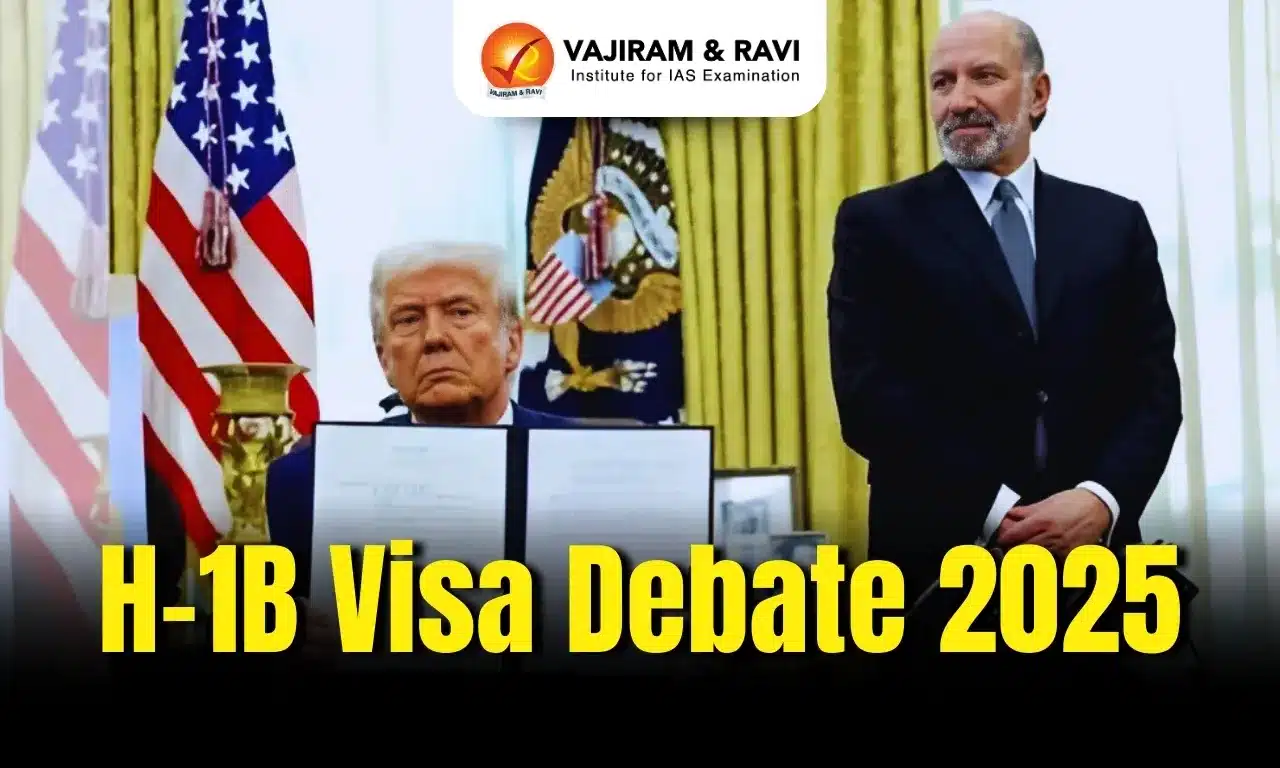What’s in today’s article?
- Why in News?
- About Comprehensive Nuclear Test Ban Treaty (CTBT)
- How did CTBT come into Being?
- Did CTBT Stop Nuclear Testing?
- Why has India Refused to Sign the CTBT?
- News Summary
Why in News?
- Russia indicated that it was moving swiftly towards revoking its ratification of the Comprehensive Nuclear Test Ban Treaty (CTBT) after President Vladimir Putin held out the possibility of resuming nuclear testing.
About Comprehensive Nuclear Test Ban Treaty (CTBT)
- The Comprehensive Test Ban Treaty prohibits “any nuclear weapon test explosion or any other nuclear explosion” anywhere in the world.
- The treaty was opened for signature in September 1996, and has been signed by 187 nations and ratified by 178.
- The treaty cannot formally enter into force until it is ratified by 44 specific nations, eight of which have yet to do so: India, China, Pakistan, North Korea, Israel, Iran, Egypt, and the United States.
- In order to verify compliance with its provisions, the treaty establishes a global network of monitoring facilities and allows for on-site inspections of suspicious events.
- Since the conclusion and opening for signature of the CTBT, nuclear testing has become taboo.
- Today, even those nuclear-armed states that have not signed or not ratified the CTBT, including India, Israel, and Pakistan, observe nuclear testing moratoriums.
- Only one country has conducted nuclear test explosions in this century, and even that country—North Korea—halted nuclear testing in 2017.
- Although the CTBT has not formally entered into force, the treaty has, for now, achieved its primary goal: ending nuclear weapon test explosions.
How did CTBT come into Being?
- Between 1945 and 1996, more than 2,000 nuclear tests were carried out — 1,032 of them by the United States and 715 of them by the Soviet Union, according to the UN.
- Britain carried out 45 tests, France 210 and China 45.
- The radioactive fallout from those tests drew criticism from around the globe. The international community’s concern about the effects on health and the environment continued to grow.
- As a result, several attempts to curb the explosive tests were made.
- The 1963 Limited Nuclear Test-Ban Treaty (LTBT) was one of the first such attempts.
- It prohibited nuclear testing in the atmosphere, outer space, and underwater, but underground tests were still permitted.
- A major breakthrough only came after the Cold War ended around 1990 and the disintegration of the Soviet Union.
- As the geopolitical tensions simmered down, the UN took advantage of the situation and adopted the CTBT, which put a blanket ban on the explosive testing of nuclear weapons.
Did CTBT Stop Nuclear Testing?
- Since the CTBT, 10 nuclear tests have taken place.
- India conducted two in 1998, Pakistan also two in 1998, and North Korea conducted tests in 2006, 2009, 2013, 2016 (twice) and 2017.
- The United States last tested in 1992, China and France in 1996 and the Soviet Union in 1990.
- Russia, which inherited most of the Soviet nuclear arsenal, has never conducted a nuclear test.
Why has India Refused to Sign the CTBT?
- India advocated a test ban years before it came into being.
- Prime Minister Jawaharlal Nehru made the first call for an “immediate standstill” agreement on nuclear testing between the United States and the former Soviet Union as early as 1954.
- However, this call was sabotaged by the nuclear weapons states (NWS) on the ground that it was “difficult to evolve a fool proof verification system”.
- Post the 1964 Chinese nuclear test, an Indian debate began on the pros and cons of advocating a test ban and nuclear disarmament.
- Subsequent developments including China’s attainment of ballistic missile capability and America’s attempt to intimidate India during the course of the 1971 War only reinforced Indian security concerns.
- India’s Stand on CTBT:
- India’s decision to not sign the CTBT is primarily based on national security considerations.
- India views nuclear weapons as a deterrent against potential security threats from neighbouring countries, especially Pakistan and China.
- India also feels that signing the CTBT would undermine its national security and strategic autonomy, as it would constrain its ability to conduct nuclear tests.
- India’s decision is rooted in its desire for equitable and universal nuclear disarmament, as well as its national security concerns.
News Summary
- Russia indicated that it was moving swiftly towards revoking its ratification of the Comprehensive Nuclear Test Ban Treaty (CTBT) after President Vladimir Putin held out the possibility of resuming nuclear testing.
- President Putin said that Russia could look at revoking ratification of the CTBT as the United States had signed but not ratified it.
- A resumption of nuclear tests by Russia, the United States or China could indicate the start of a new nuclear arms race between the big powers who stopped nuclear testing in the years following the 1991 collapse of the Soviet Union.
- Russia currently has around 5,889 nuclear warheads, compared with 5,244 for the United States, according to the Federation of American Scientists.
Q1) What is the objective of NPT?
The NPT is a landmark international treaty whose objective is to prevent the spread of nuclear weapons and weapons technology, to promote cooperation in the peaceful uses of nuclear energy and to further the goal of achieving nuclear disarmament and general and complete disarmament.
Q2) What is the role of IAEA in nuclear security?
The IAEA promotes a strong and sustainable global nuclear safety and security framework in Member States, working to protect people, society and the environment from the harmful effects of ionizing radiation.
Source:
Last updated on August, 2025
→ UPSC Mains Question Paper 2025 is out for Essay, GS 1 & GS 2.
→ UPSC Mains GS 3 Question Paper 2025 is now out.
→ UPSC Mains GS 4 Question Paper 2025 is now out.
→ UPSC Mains 2025 will be conducted on 22nd August 2025.
→ UPSC Notification 2025 was released on 22nd January 2025.
→ UPSC Calendar 2026 is released on 15th May, 2025.
→ UPSC Prelims Question Paper 2025 and Unofficial Prelims Answer Key 2025 are available now.
→ UPSC Prelims Result 2025 is out now for the CSE held on 25 May 2025.
→ The UPSC Vacancy 2025 were released 1129, out of which 979 were for UPSC CSE and remaining 150 are for UPSC IFoS.
→ UPSC Prelims 2026 will be conducted on 24th May, 2026 & UPSC Mains 2026 will be conducted on 21st August 2026.
→ The UPSC Selection Process is of 3 stages-Prelims, Mains and Interview.
→ UPSC Result 2024 is released with latest UPSC Marksheet 2024. Check Now!
→ UPSC Toppers List 2024 is released now. Shakti Dubey is UPSC AIR 1 2024 Topper.
→ Also check Best IAS Coaching in Delhi














